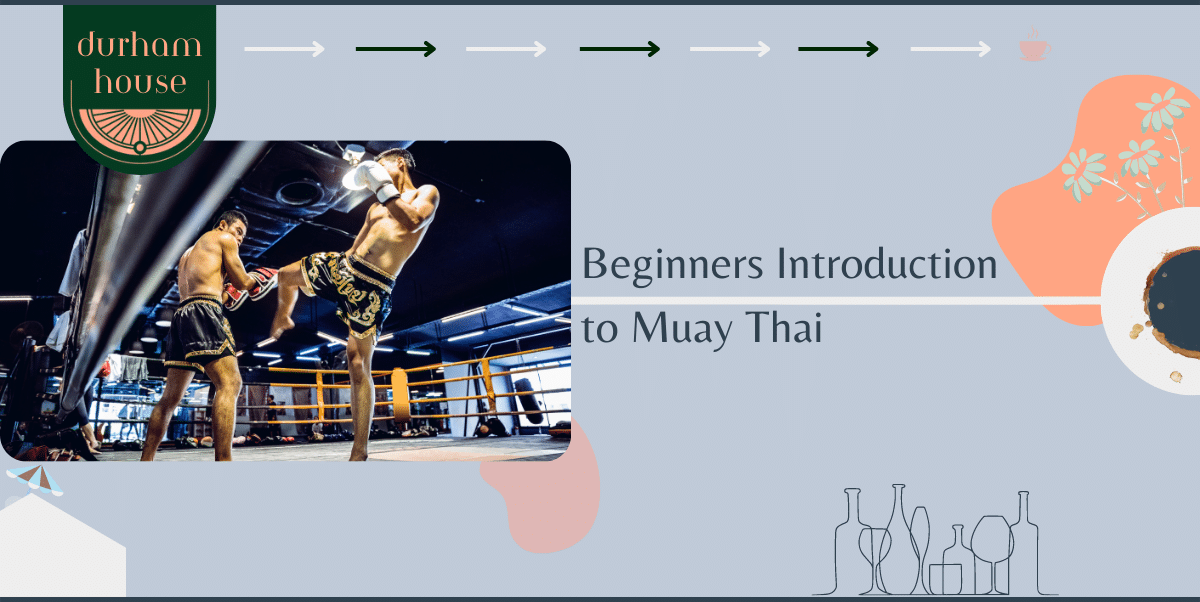While it might sound cliche, Muay Thai quite literally changed my life. Since picking up the sport during my time backpacking in Thailand, I have come to challenge myself in ways I never thought possible. I think many others have similar stories as martial arts are often credited to personal change.
Before starting the martial art, I was in poor mental shape, drinking a little too much on weekends and not focused on my health. Along with a lack of exercise and disciple, my physical shape was rather lacklustre for someone my age. Since then, I’ve changed who I am physically and mentally and I can thank Muay Thai for steering me in a better direction.
Muay Thai is a combat sport that is widely practised in Thailand and other parts of the world. It is known for its striking techniques, which include punches, kicks, knees, and elbows as well as clinch work. It is treasured in Thailand and has rich historical significance while also being practised and appreciated around the world.
If you’ve ever thought of starting Muay Thai then you’re in the right place. This blog post will give a beginners introduction to Muay Thai, including its history, benefits, and how to get started for Muay Thai beginners.
Where did Muay Thai originate from?
The martial art started during the Sukhothai period in the 13th century during times of war, when Thailand experienced many wars and conflicts. This meant that soldiers had to develop skills in hand-to-hand combat, and the Thais developed a fighting style focused on power and using the whole body as a weapon. It was taught to young soldiers by monks and teachers and was passed down from generation to generation.
Muay Thai was declared an official martial around the 18th century when the country wanted to preserve the fighting form with competition within their communities. This act served to honour the skills of the Thai soldiers and pay tribute to their courage in battle. Muay Thai later developed influence from western boxing using timed rounds and padded gloves, further solidifying the sport on the international circuit.
Since then, Muay Thai has gained recognition nationally and internationally, with fighters participating in MMA events worldwide. The sport quickly gained popularity due to its effectiveness in combat and has now become a highly respected sport, with many clubs and associations dedicated to promoting it globally.
The different techniques involved in Muay Thai

This distinct form of martial arts utilises striking techniques combined with skilful clinch work and dynamic transitions between opponents to create an effective form of self-defence. These elements allow for multiple styles and techniques, meaning that fights can have the potential to be very free-flowing, with elements of boxing or kickboxing incorporated. The striking techniques in this combat style include punches, kicks, elbow strikes, and knees, with the addition of some grappling elements called clinching, which includes throws and sweeps.
The Muay Thai Stance
The stance is a fundamental part of every martial art, and Muay Thai is no exception. Having a good stance will provide the practitioner with better balance when performing strikes or defending themselves against attacks. The stance involves having the feet shoulder-width apart, toes pointed outwards, and hands held up to guard with elbows tucked. This allows the practitioner to block, strike, and move in all directions.
Muay Thai Clinching
The clinch is integral to Muay Thai, as it can control and stop strikes. It involves holding onto the opponent while they are attempting to strike you, almost like standup wrestling. Using elbows and knees is a common way to control your opponent in the clinch position, making Muay Thai a much more dynamic combat sport than other martial arts. The use of the clinch can also be incorporated with takedowns and sweeps.
The benefits of practising Muay Thai
The ancient martial art of Muay Thai is known for its exceptional physical and mental health benefits. It allows a person to stay agile, push their body’s physical limits and build significant muscle tone. Because the sport is all-encompassing, you’ll be able to develop not only cardio and strength but also mental resilience and discipline.
Through practising consecutive punches, kicks and throws, individuals can learn to coil up tension within themselves and release it with explosive power strikes. This helps develop functional and explosive strength, which offers more benefits than weightlifting alone. You will naturally improve cardiovascular fitness due to the relentless pad work, running, skipping, sparring and conditioning.
Muay Thai instils self-confidence and discipline because you’re constantly pushing yourself for more, getting better every day. It helps you realise your potential and ability to push against the odds. These mental benefits can spill over to all areas of your life, whether business or relationships. The sport can be all-encompassing, and even if you don’t compete professionally, you’ll find that the practice is well worth the effort and time.
How to get started with Muay Thai training
Muay Thai training can be an exciting journey towards fitness, discipline, and self-defence. The first step to getting started is finding a qualified gym or instructor so you can start with a solid foundation. The most important thing is to ensure that your trainer is experienced and knowledgeable.
After you’ve found the right environment to begin your journey, you should learn about the traditions and history of the sport. Look at some of the best and most prolific fighters to understand the techniques and movements of the sport. Also, ensure you invest in quality gear that protects the head and body before your first session.
What to look for in a Muay Thai Boxing Gym
There are some critical points to consider when looking for a Muay Thai gym, especially as a beginner. It is critical to get good instruction so you don’t need to spend time later down the road correcting bad techniques. The head trainer should have some fight experience, and if the gym has some active fighters, this is an excellent sign that the level of training is exceptional.

The gym’s atmosphere is also important, it should promote camaraderie and respect among students while providing a good space for physical activity. While not always the most important factor, you should check that the gym has good equipment, such as bags, pads and gear for conditioning.
Muay Thai in Melbourne
Here is a list of popular Muay Thai Gyms in Melbourne that are worth checking out for beginners and professionals that offer excellent instruction and facilities. . They are spread throughout the city, so you should be able to find one that suits your needs.
8 Blades Warriors

Based in the Western Suburbs of Melbourne, 8 Blades Warriors is home to some exceptional talent in the Australian Muay Thai scene. The fight team is run by head trainer Superboy who is not only the older brother to the well-known Superbon but also a well-known Muay Thai fighter himself, competing in Thailand and Internationally.
Supafight Gym
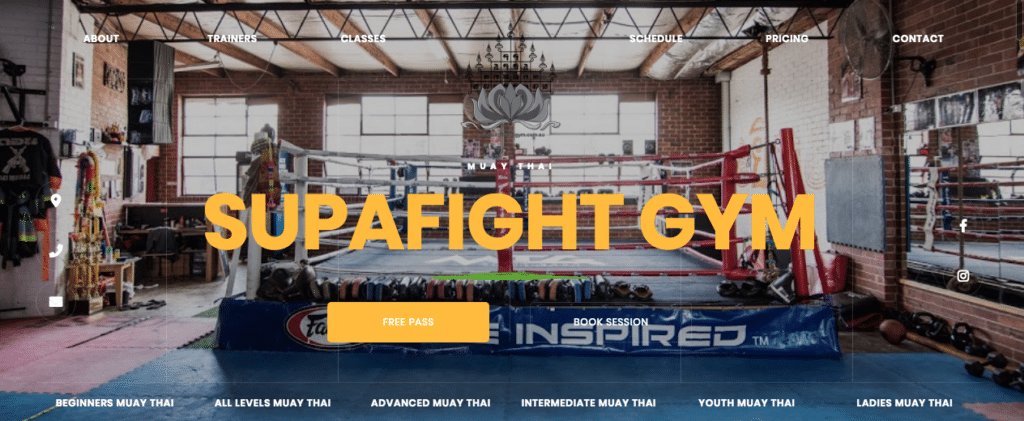
Superfight Gym is Muay Thai gym in St Kilda, Melbourne headed by Don Miller, who is another well-known figure in the Muay Thai scene. He is an Australian who has racked up multiple fights in Australia and internationally against esteemed opponents. The gym is located in St Kilda and features a team of coaches, from beginners to professional fighters.
Dominance MMA

Located in the South Eastern Suburbs of Melbourne, Dominance MMA is a state-of-the-art gym that features excellent Muay Thai facilities. The gym’s trainers are all highly experienced and have competed nationally and internationally. They also offer Muay Thai classes for all levels, from beginners to experienced fighters. Being an MMA gym they also offer Jiu-Jitsu and MMA classes if this is something you’re interested in undertaking.
Hammers Gym
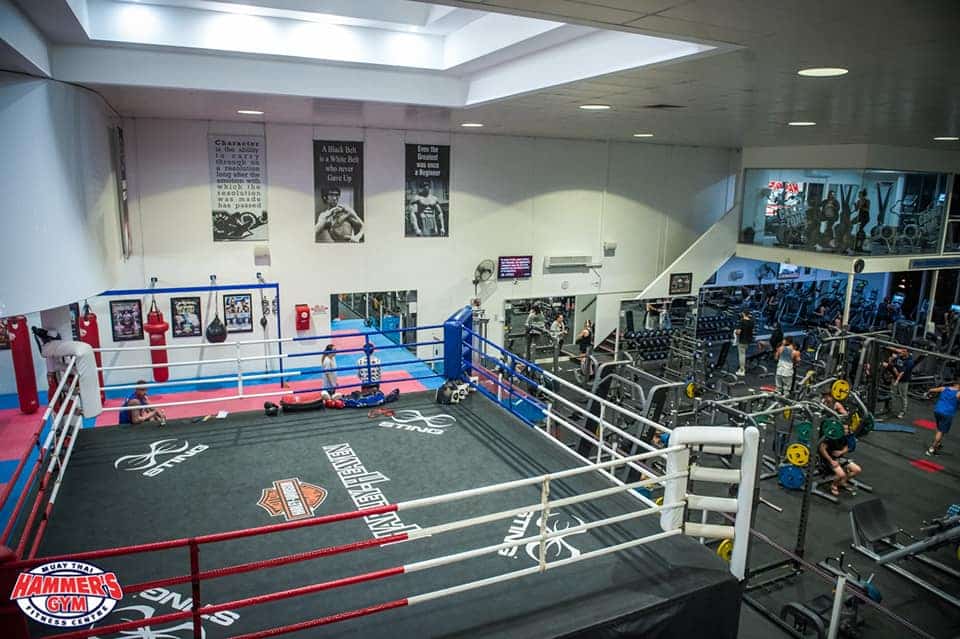
Hammers Gym is located in Melbourne’s eastern suburb of Nunawading, which is a bit further out from the city but well worth it if you’re local. This Muay Thai gym in Melbourne is run by Mark Castagnini, who has been training professional Muay Thai, Kickboxers and Boxers since 1995. It has an excellent reputation for producing good fighters, so if you’re looking for solid training, this gym should be high on your list.
Muay Thai Gear
When looking for Muay Thai gear, it’s essential to invest in quality products so you ensure that you don’t take unnecessary damage during your training sessions. With the right equipment, you can practice confidently and ensure a safe training environment.
Muay Thai Gloves
An essential piece of equipment is a good pair of gloves. Quality gloves will provide padding that protects your hands and wrists while hitting heavy pads or bags and offers protection when sparring. When looking for brands, ensure you don’t buy cheap, low-quality equipment; durability is key, as you’ll be putting your gloves through lots of punishment.
Brands that I recommended are Fairtex, Twins, Yokkao and Boon. These all provide high-quality materials that will last over time. In terms of sizing, I would recommend purchasing one pair for training around 8-10oz, and another paid for sparring around 14-16oz, depending on your size.
Muay Thai Shorts
While any sports shorts should be fine for training, you can also get some Muay Thai shorts, as they provide added comfort and flexibility. When looking for a pair of Muay Thai shorts, look for ones with quality construction, reinforced stitching, and breathable materials.
Muay Thai Hand Wraps
Muay Thai hand wraps are a must-have if you’re serious about training, as they provide additional protection to your hands and wrists and help keep the gloves in place. Hand wraps should be snug but not tight and be made of breathable fabric so your hands don’t get too sweaty during training.
Mouthguards
If you intend on sparring and competing, then mouthguards are a must. They help to absorb and disperse the shock from any impact on the face and reduce damage. You can buy some online or in sports shops and fit them or get them custom-made. The custom-made mouthguard is more expensive, but the fit would be much better, and I’d consider them safer than the home-fitted alternatives.

Muay Thai Shin Guards
Muay Thai shin guards are designed to protect against kicks, and other lower leg strikes. They provide adequate padding while still allowing movement, which is essential as Muay Thai involves so much kicking. When shopping for Muay Thai shin guards, look for ones with quality construction and durable material, such as the Fairtex SP5, which I recommend.
Muay Thai Headgear
While training doesn’t always call for headgear and isn’t a necessity, if you’re planning on doing hard sparring or boxing sparring, then it’s recommended. Headgear helps reduce impact when taking heavy-handed shots to the face, reducing the likelihood of injury.
Muay Thai Ropes
You’ll likely jump rope every session when you’re warming up for your Muay Thai classes, so getting your rope is wise, as your gym might have a limited supply. Don’t worry so much about the brand just get something comfortable for you, at the right length and durable enough to last a while.
The Best Muay Thai Fighters
There are so many legends in Muay Thai that I would have to write multiple articles just to do them all justice, but there are a few that everyone knows and that you should certainly study. Here is a list of some of the most esteemed fighters in the sport over the years.
Samart Payakaroon
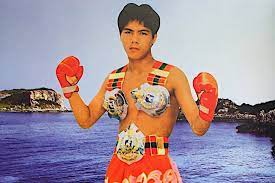
Samart Payakaroon is one of the most revered Muay Thai fighters in history. He was a two-time Lumpinee Stadium champion, a six-time Rajadamnern Stadium champion, and a three-time World Champion. He was nicknamed ‘The Scientist’ for his incredible accuracy and strategic approach to fighting. He is also renowned for being among the few fighters to win a significant title in Muay Thai and boxing.
Saenchai PKSaenchaimuaythaigym
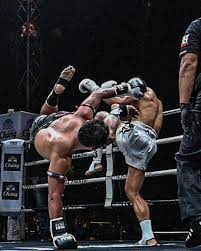
Saenchai PKSaenchaimuaythaigym is considered one of the greatest Muay Thai fighters of all time. He has won seven world titles in Muay Thai and kickboxing and is renowned for his incredible technique and agility. Saenchai is well-known for his creative use of offence, including spinning elbows, flying knees and dynamic kicks. He is also known for his willingness to fight any opponent regardless of size or experience.
Somrak Khamsing

Somrak Khamsing is another legendary figure in Muay Thai history. He won four Lumpinee titles, three Rajadamnern titles, and two WBC world titles. He was known for his incredible speed, technique and power, earning him the nickname ‘The Professor’. This fighter is incredibly evasive and has excellent hands. When no one wanted to challenge him in the Muay Thai circuit, he transitioned to boxing.
Buakaw Banchamek
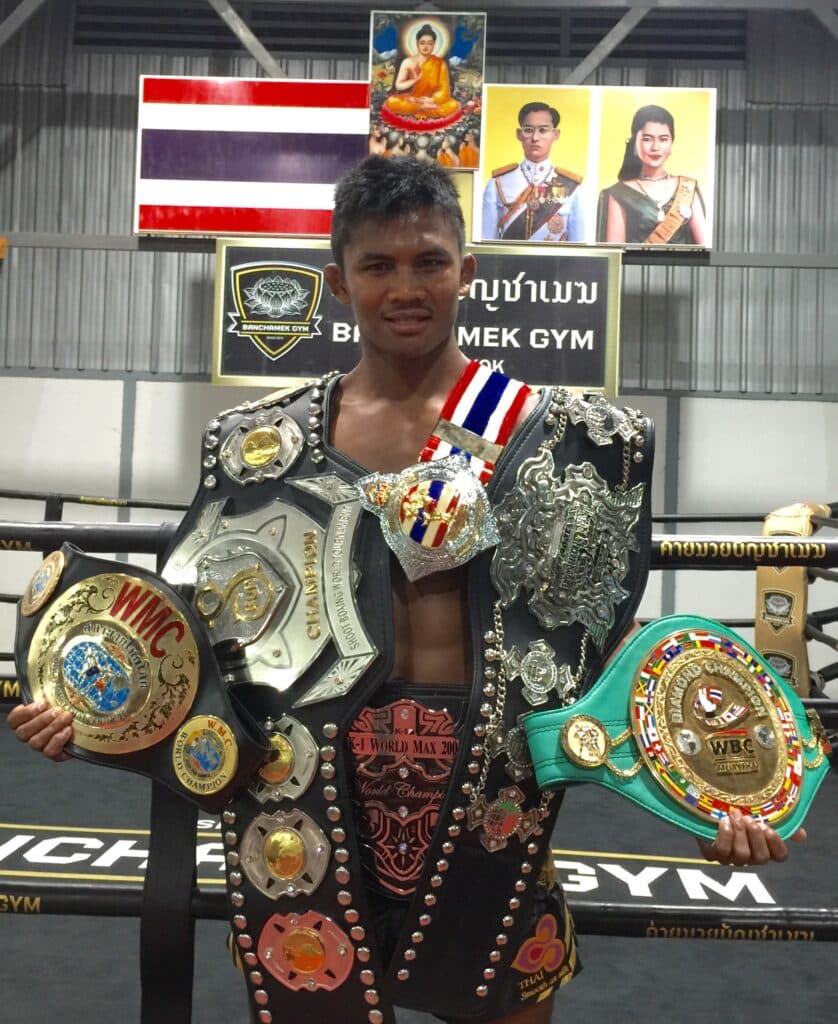
Buakaw Banchamek is one of the most recognisable Muay Thai fighters ever. He has won two K1 World MAX titles, three Lumpinee titles and four Omnoi Stadium titles. His aggressive style and powerful kicks earned him the nicknames ‘White Lotus’ and ‘The King of Kicking’. He is still actively competing today, showing no signs of slowing down.
Nong-O Gaiyanghadao
Nong-O Gaiyanghadao is one of the most successful Muay Thai fighters of all time. He has won four Lumpinee titles, three Rajadamnern titles, and two WBC world titles. His style incorporates damaging elbows, knees, and powerful kicks, earning him the nickname ‘The Karate Kid of Muay Thai’. He is currently the ONE Super Series Muay Thai Bantamweight World Champion.
John Wayne Parr
John Wayne Parr is an Australian Muay Thai fighter who has competed in over 100 professional fights. He has won ten world titles in both Muay Thai and kickboxing, and he is credited with popularising the sport of kickboxing in Australia. He is known for his incredible speed and agility and his never-say-die attitude.
Muay Thai vs Kickboxing
Muay Thai and kickboxing are both combat sports that employ striking techniques. The main difference is stylistic, and both have different rules for striking. In kickboxing, you can throw kicks, punches and knees, but in Muay Thai, there are many more options, with elbows and clinching also involved.
While these differences in ruleset make both sports unique, we also see general stylistic differences in both art forms. Typically kickboxing matches have much more combos, as scoring is based on aggression and volume. Traditional Muay Thai emphasises other elements such as balance, striking effect, defence and technique.
Both martial arts are effective forms of self-defence and are great for fitness training no matter what you choose. They offer different experiences for practitioners as they each focus on different aspects of combat, so review the differences between them to determine which one suits your individual needs.
Muay Thai Weight Classes
Muay Thai has various weight classes for participants to compete in. The most common divisions are Lightweight, Middleweight, Welterweight and Cruiserweight. Each division is broken down further into categories, such as Superlight or Heavyweight, depending on the level of competition.
- Mini Flyweight: weight over 100 lbs but not exceeding 105 lbs (47.629 kg)
- Junior Flyweight: weight over 105 lbs but not exceeding 108 lbs (48.990 kg)
- Flyweight weight: over 108 lbs but not exceeding 112 lbs (50.805 kg)
- Junior Bantamweight: weight over 112 lbs but not exceeding 115 lbs (52.166 kg)
- Bantamweight: over 115 lbs but not exceeding 118 lbs (53.526 kg)
- Junior Featherweight: weight over 118 lbs but not exceeding 122 lbs (55.341 kg)
- Featherweight: over 122 lbs but not exceeding 126 lbs (57.155 kg)
- Junior Lightweight: weight over 126 lbs but not exceeding 130 lbs 58.971 kg)
- Lightweight: weight over 130 lbs but not exceeding 135 lbs (61.238 kg)
- Junior welterweight: weight over 135 lbs but not exceeding 140 lbs (63.506 kg)
- Welterweight: weight over 140 lbs but not exceeding 147 lbs (66.681 kg)
- Junior Middleweight: weight over 147 lbs but not exceeding 156 lbs. (70.764 kg)
- Middleweight: weight over 156 lbs but not exceeding 160 lbs (72.578 kg)
- Junior Heavyweight: weight over 160 lbs but not exceeding 175 lbs (72.578 kg)
- Heavyweight: weight exceeding 175 lbs (79.383 kg) and upwards
As a general rule of thumb, the lower the Muay Thai weight class, the more competitive it tends to be. Muay Thai weight classes are also determined by the size of the gloves used in competition, with lighter weights using smaller gloves while heavier fighters use larger ones. This helps to ensure fair and safe matches between participants by considering their respective sizes and physical capabilities.
Muay Thai Tattoo Sak Yant
The Sak Yant is a traditional Thai tattoo that has been popular among Muay Thai fighters for centuries. It’s believed to bring good luck, protection and strength to the person bearing it and often features Buddhist images or symbols. In modern times, some fighters add their personal touch to their designs or even incorporate Muay Thai-specific images.
The traditional tattoos usually involve images of Hindu edited that are revered in the Theravada Buddhist culture of Thailand. These can include Ganesha, Vishnu, Hanuman, amount others as well as other charms and animal deities thought to bring good fortune. It is also thought that for the tattoos to retain their power, one must follow Buddhist precepts which involve abstinence from alcohol, adultery and other rules.

IG: spiritualsakyant
The Sak Yant is often seen as a sign of respect for the sport and its practitioners, but it’s also a way to show dedication and commitment to Muay Thai training. Whether you get one or admire them from afar, Muay Thai fighters tattooing is an integral part of the culture.
Tips for beginners who are just starting out
My advice to any Muay Thai beginners starting is to enjoy the process and don’t be discouraged if your form isn’t perfect, to begin with; like any skill, this will take time. However, it is important to drill the fundamentals as much as possible when starting. This ensures that the beginners develop good habits to start off with and don’t need to correct form later down the track.
It might be wise to start with private lessons as personalised attention will help you grasp the fundamentals at a faster pace. If your gym offers one on one coaching then this would be the best opportunity to build a solid foundation for the future.
Also, don’t overthink it, enjoy the process just like any other skill it will take time to master, so enjoy!
Summary
Hopefully, you’ve learned something in this guide and gained a greater appreciation for one of the most unique and beautiful combat sports. While not everyone needs to compete at a professional level, it can provide numerous physical and mental benefits from strength, endurance and confidence.
If it interests you in any way, don’t hesitate to go to your local gym and try out a Muay Thai class; surprisingly, most of those involved in the sport are very welcoming and friendly. Most importantly, enjoy learning and appreciate the journey above all else. With patience and dedication, anyone can become adept in the fine art of Muay Thai.
Featured Photo by Pablo Rebolledo on Unsplash
